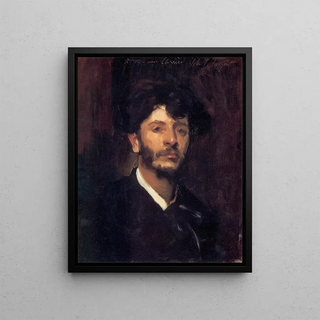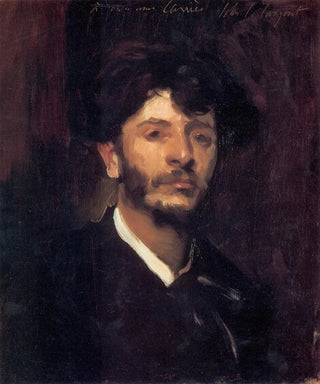Art print | Portrait of Jean Joseph Marie Carriès - John Singer Sargent Source: Reproduction | Portrait de Jean Joseph Marie Carriès - John Singer Sargent


View from behind

Frame (optional)
Jean Joseph Marie Carriès - John Singer Sargent – Captivating Introduction
The "Portrait of Jean Joseph Marie Carriès" by John Singer Sargent is a work that transcends the simple framework of a portrait to become a true exploration of human personality. Created at the end of the 19th century, this iconic piece not only demonstrates Sargent's technical mastery but also his skill in capturing the very essence of his subjects. Through this painting, the artist invites us to delve into the intimacy of Carriès, a French sculptor and painter, whose intense gaze and reflective posture provoke questions about the complexity of humanity. This portrait stands out for its vibrant atmosphere and psychological approach, reflecting a time when art was undergoing profound transformation, seeking to combine technique and emotion.
Style and uniqueness of the work
Sargent's style in this portrait is characterized by striking realism that appears almost photographic. The meticulous details, from delicate facial features to the textures of clothing, testify to attentive observation and a capacity to render the human soul on canvas. Light plays a crucial role in this piece, creating shadows and reflections that add unprecedented depth to Carriès's face. The colors, though subdued, are subtly rich, oscillating between warm tones and cooler shades, contributing to the palpable emotion emanating from this representation. Sargent manages to create an almost tangible connection between the viewer and the subject, making this portrait both intimate and universal.
The artist and his influence
John Singer Sargent, an emblematic figure of portrait painting, established himself as one of the most influential artists of his time. Trained at the École des Beaux-Arts in Paris, he interacted with masters such as Claude Monet and was deeply influenced by the Impressionist movement. However, Sargent developed a style that is uniquely his own, blending classical technique with a modern approach. His portraits, often commissioned by aristocracy and high bourgeoisie, serve as testimonies of his era but also as reflections on human nature. The work dedicated to Carriès perfectly illustrates this duality, blending the intimacy of a

Matte finish

View from behind

Frame (optional)
Jean Joseph Marie Carriès - John Singer Sargent – Captivating Introduction
The "Portrait of Jean Joseph Marie Carriès" by John Singer Sargent is a work that transcends the simple framework of a portrait to become a true exploration of human personality. Created at the end of the 19th century, this iconic piece not only demonstrates Sargent's technical mastery but also his skill in capturing the very essence of his subjects. Through this painting, the artist invites us to delve into the intimacy of Carriès, a French sculptor and painter, whose intense gaze and reflective posture provoke questions about the complexity of humanity. This portrait stands out for its vibrant atmosphere and psychological approach, reflecting a time when art was undergoing profound transformation, seeking to combine technique and emotion.
Style and uniqueness of the work
Sargent's style in this portrait is characterized by striking realism that appears almost photographic. The meticulous details, from delicate facial features to the textures of clothing, testify to attentive observation and a capacity to render the human soul on canvas. Light plays a crucial role in this piece, creating shadows and reflections that add unprecedented depth to Carriès's face. The colors, though subdued, are subtly rich, oscillating between warm tones and cooler shades, contributing to the palpable emotion emanating from this representation. Sargent manages to create an almost tangible connection between the viewer and the subject, making this portrait both intimate and universal.
The artist and his influence
John Singer Sargent, an emblematic figure of portrait painting, established himself as one of the most influential artists of his time. Trained at the École des Beaux-Arts in Paris, he interacted with masters such as Claude Monet and was deeply influenced by the Impressionist movement. However, Sargent developed a style that is uniquely his own, blending classical technique with a modern approach. His portraits, often commissioned by aristocracy and high bourgeoisie, serve as testimonies of his era but also as reflections on human nature. The work dedicated to Carriès perfectly illustrates this duality, blending the intimacy of a






